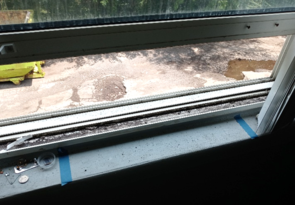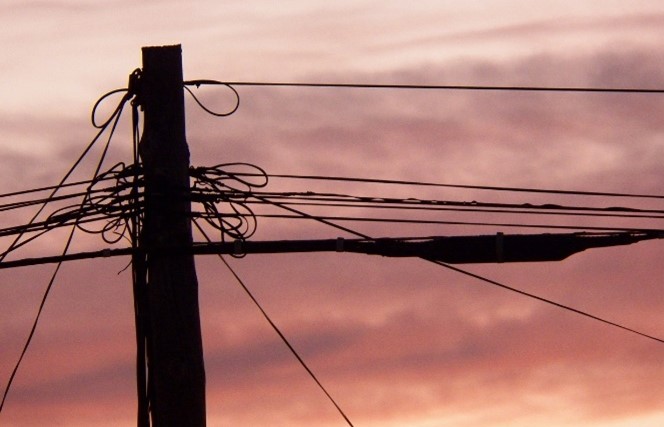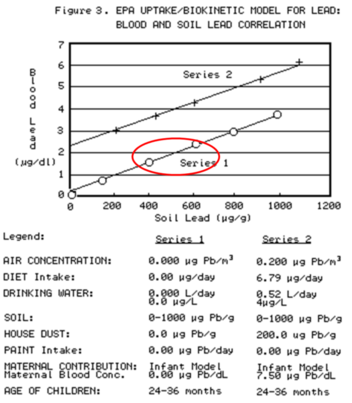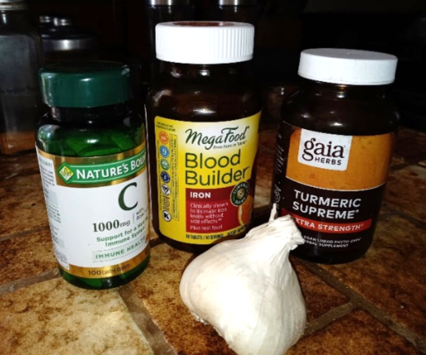Lowering Our Standards
On August 1, 2023, the EPA published a Notice of Proposed Rulemaking, Reconsideration of the Dust-Lead Hazard Standards and Dust Lead Post-Abatement Clearance Levels. In this notice, a rule has been proposed that would reduce the lead dust hazard standards from 10 µg/ft2 for floors, 100 µg/ft2 for window sills and 400 µg/ft2 for window troughs (currently 100 µg/ft2 in Michigan ) to any reportable level (above the detection limit). It is proposed that the detection limits should be a minimum of 3 µg/ft2 for floors, 20 µg/ft2 for window sills and 25 µg/ft2 for window troughs.
In my view, this would represent the most radical and severe drop in any cleanup criteria ever seen in the environmental business.
Lead Assessment and Clearance Testing Faces a New Hazard
The origin of this notice traces back to a May 2021 9th Circuit Court of Appeals opinion. In the case of A Community Voice, Sierra Club et. al. vs. EPA, the petitioners sought to force EPA to adopt more stringent lead cleanup standards. They succeeded by shopping their case in the most activist and pragmatic of all of our federal Courts. Supreme Court reversals for this Court are roughly double the rates of the other courts. (1.) The plaintiffs argued that EPA erred by considering attenuating circumstances in the setting of lower standards in the 2019 Rule change. The basis for their argument was that Congress amended the Toxic Substances Control Act (TOSCA) “to develop a national strategy … to eliminate lead-based paint hazards in all housing as expeditiously as possible."
In setting these levels, the Court found that EPA considered additional factors having to do with feasibility and efficacy. But the Opinion states that Congress made no mention of economic or market factors in any of its definitional provisions of sources of harm. Yes, you read that right. The Court said that there should be no consideration for feasibility or efficacy!
In this case, the Court found that EPA was required to set a threshold level of harm by looking only to health risks “because we now know that all levels of lead are harmful to human health.”
In my view, here's the problem: Congress did not carefully and precisely define lead-based paint hazards. In 15 U.S.C. § 2681(10), the provision reads as follows:
Home Court Advantage
Photo credit: Tingey Injury Law Firm (Unsplash public domain license)
The term “lead-based paint hazard” means any condition that causes exposure to lead from lead-contaminated dust, lead contaminated soil, lead-contaminated paint that is deteriorated or present in accessible surfaces, friction surfaces, or impact surfaces that would result in adverse human health effects as established by the Administrator under this subchapter.
Further below I will explore the folly of linking the term “lead-based paint hazard” to non-paint sources, which includes consideration of “background.”
A Clearance Sale on Clearances
In a legalistic sense, only the hazard levels were challenged by A Community Voice. However, as a simplification in our business, the precedent is that the clearance levels are typically harmonized with the hazard levels. As many of us in this profession understand, this defies another common principle of environmental testing: it requires more data and stringency (by proving a negative) when a cleanup is performed than when an assessment is performed. The Court ruled that lead dust hazard standards must be based solely on health factors, while at this time the lead dust clearance levels may consider the additional factors of safety, effectiveness and reliability. This is backwards. If you are in the environmental business you would appreciate how much sampling is typically done for a typical Phase II Environmental Site Investigation. Then compare that with the more rigorous sampling of the State of Michigan Verification of Remediation guidelines. Similarly, for multi-family lead testing under HUD guidance, substantially more units must be sampled for clearance than for risk assessment.
In most abatement projects, there should be no serious objection to setting lower or non-detectable cleanup levels because this should be readily achievable with proper cleaning methods. You are getting good value from the contractor when they return the building to a pristine condition. However, for lead hazard assessment purposes, it’s a gross waste of money to identify hazard levels consistent with or exceeding local background conditions where any cleanup will only be temporary.
It’s not uncommon to find background levels of lead dust on window sills and within window troughs of vinyl windows
Here is another example to illustrate the disproportionately severe impact of implementing non-detect standards on the assessment end. In multi-family housing, representative dust sampling is performed of units in lieu of testing the entire building. As a general rule of thumb, HUD guidelines require about 20% of units tested in small buildings and 10% in large buildings. The chances are that at least some windows, even if newer vinyl replacements, are going to contain detectable levels of lead from ambient background sources. This is going to force a very labor intensive and expensive undertaking of cleaning all the failed and untested windows in the building and then subjecting them to an additional round of testing where the required fraction of testing for clearance is much higher. For gross estimating purposes, I would describe this HUD clearance requirement as 50% for small buildings and 25% for large buildings. However, once a building owner has suffered this requirement and has to proceed to clearance, there is not that much difference between the cost and cleaning effort to get a window to meet a 100 µg/ft2 standard rather than 25 µg/ft2.
Window Shopping
One of the considerations that makes this proposal remarkable is the apparent lack of consideration that the window sampling detection limit is limited by the sampling area, which is discretionary and also affected in part by the area of the surface being sampled.
Many laboratories, including the biggest lead laboratory in Michigan, use conventional Flame Atomic Absorption (Flame AA) spectrometers, the most reliable and cost-effective means of lead analyses for solids. However, this equipment cannot necessarily meet all of the proposed detection limits. The smallest of windows I have encountered have trough and sill areas of about 12 square inches. This results in a detection limit of 60 ug/ft2 by Flame AA, well above the recommended EPA target. At the current time, these windows cannot even be reliably assessed as a 14 square inch area is required to meet the current minimum detection limit.(2.) The relationship of sample area to detection limit puts the Lead Risk Assessor in an awkward position by now introducing personal bias into the sampling scheme knowing that larger sample areas are more likely to fail than smaller ones. Further, a room with two different windows may pose a dilemma: do you sample the one that can be reliably assessed with a larger sample area or do you choose the one you think poses the greater risk? Would a Risk Assessor choose a larger or smaller sample area to either help or hinder an owner’s chance of obtaining a passing result?
This Floored Me
The situation is worse with floors. According to Ms. Elyse Bidle, QA Manager of Accurate Analytical, one of the largest lead testing laboratories in Michigan, their current lab equipment would have difficulty achieving the lower detection limit. The proposed 3 ug/ft2 detection limit is below their 5 ug/ft2 reporting limit. To report to down to 2.5 ug/ft2 would require doubling the sample area (e.g. a 24-inch by 24-inch area or collecting two 12x12-inch samples). The only other alternative to achieve the lower limit is to switch from Flame AA to Inductively Coupled Plasma Spectroscopy (ICP) analysis. However, the cost of operation for ICP analysis is greater than Flame AA analysis. The price per sample from labs would likely have to significantly increase to reflect operational costs. In addition, the turnaround times would also increase. Rush work would be impacted. Same day analysis could be very hard to reliably provide using current ICP methods.(2.)
Based on the lead pricing I have seen other laboratories quoting for lead by ICP, I think lab costs could almost double under these new proposed standards. An increasing number of detectable and failing results increases the report writing costs as well.
Background on Background
One of the other considerations possibly not understood by the regulators is that this proposal appears to drop the hazard levels well below what I would consider “background.” Toxicology-based criteria often produce a theoretical idealized clean up criterion below background. Regulators and consultants working in other areas such as soil and groundwater contamination cleanup well know the folly of expending effort trying to cleanup to below background levels. In those cases, a strong consensus exists (as well as application of common sense) that cleanup is only required to local background levels.
In my opinion, from experience with hundreds of assessments and clearances, the old pre-2019 standards were suitable and properly accommodating to allow for background (40 ug/ft2 for floors, 250 ug/ft2 for window sills and 400 ug/ft2 for window troughs). For example, where you saw lead paint hazards and a lack of cleaning, you would typically see some dust levels above these standards. Conversely, for properties with no lead-based paint, it would be very uncommon to get a failing dust result for a window or floor. As a ballpark guestimate, I would say that about 5% of dirty vinyl windows would fail the 250/400 standards and about 1-2% of floors would inexplicably fail from lead dust. These failure rates were tolerable and seemed compatible with inherent variability and the fact that our testing protocols are generally geared towards 95-99% confidence levels.
For the floors, I would cite the following anecdote under the pre-2019 standards. I was testing the front entry floor of an apartment complex that was found to have almost no detectable levels of lead in interior and exterior paint. During this project, some of the employees were working in the dripline area on a foundation issue. As a result, I could see the remnants of foot traffic mud tracked in the building where the gross soil was swept up but water-marked dirt tracks remained on the flooring. The floor sample result in this area yielded a barely passing result of 39 ug/ft2. This suggests that the mundane soil tracking of typical urban soils not near a lead source (commonly 50-100 mg/kg) will yield a borderline dust hazard condition under those standards. This of course, ignores the fact that the 40 ug/ft2 standard was based on the highly bioavailable form of friction dust rather than the lower-risk soil-bound forms of lead salts found in soil (in addition to traces of more bioavailable forms from leaded gasoline and other pollution that deposit in the soil).
For windows, I would cite my personal experience trying to clear window troughs in older neighborhoods where the house in question had no exterior lead hazards, but nearby old homes were in varying condition. For a cluster of homes done in such an area, I would estimate that over 50% of the time, one or more failing window trough results were obtained due to wind-blown or rain-settled lead dust if sampling was conducted if cleaning was followed by rainfall or more than a week after cleaning.
Both these examples cite the problem with clearing houses in these areas to ideal pristine standards that will quickly be recontaminated by background sources of lead.
Photo credit: CathyClare (Pixabay public domain license)
Adding to this problem, is the lack of understanding of the various sources and deposition rates of background levels of lead dust from the various sources in the environment. For example, a July 9, 2023 Wall Street Journal article, America is Wrapped in Miles of Toxic Lead Cables, cites examples of pole-mounted legacy land-line phone cables abandoned throughout our inner cities, including Detroit. It points out examples where lead-sheathed cables were shedding lead dust, which then entered nearby open windows or doors, causing exposures to young children.
In addition, we are still learning about how lead occurs in other common non-paint sources. For example, I have found lead in window caulk affecting test results. I have also observed lead detections in the vinyl windows after cleaning that appeared correlated to cigarette burn marks. I would hypothesize that the melted and burned vinyl blisters in the trough either mobilizes the traces of lead stabilizers in the vinyl or adsorbs or forms a complex with lead dust that resists cleaning.
"Lead, ... Its What's For Dinner"
Further compounding the problem of understanding background is the oft-cited and misleading statement that “any level of lead is harmful to children.” While this can be considered technically true based on toxicological calculations and the dose-slope of lead, it ignores the reality of background—that there are low levels of lead in air, water, soil and food. Lead is the 36th most common element in our environment. No act of Congress or a Court will change the fact that we will be exposed to low levels of lead in these media every day of our life.
One study determined that the average concentration of lead in urban air of 1-2 ug/m3 equates to an ingestion of about 16 ug per day. (3.) The consensus of various studies in the 1970s and 1980s was that the average person at that time received about 100-400 μg lead/day from food. (4.) For children currently, CDC data has shown it has dropped to something like 3 μg lead/day. This is a HUGE accomplishment! Yet current articles about the levels of lead in baby food and other foods still remain absolutely alarmist about lead that may occur in part naturally in our food.
One study focused on the natural bioaccumulation of lead in vegetables under non-urban conditions grown in soil with a lead level of 17 mg/kg, closely estimating the Michigan default background concentration. The results were higher than you would expect: 0.3 ppm for corn and potatoes, 0.7 ppm for tomatoes, 1 ppm for cabbage, 2 ppm for carrots and 3 ppm lettuce. (5.) Are these naturally grown vegetables unsafe? Would the Court strike down all the limits for lead set by the FDA based on the same reasoning? Should we urge people to eat more highly processed foods such as frozen pizzas rather than vegetables to limit our intake of lead?
From the studies of Superfund sites and lead mines where background lead levels are high, it’s my understanding that the science is pretty well advanced, and we can predict the resulting average blood lead levels in local children. We should be using this knowledge to provide an expected baseline of blood lead levels based on urban background to better understand what gains can realistically be had.
One study calculated that where soil background is 1000 ppm, the contribution to blood lead is predicted to be 2.5-3 ug/dl from associated household dust. (6.) I would estimate the urban soil in the worst areas of urban Detroit to be about roughly half that (in my experience 300-800 ppm is typical in non-amended soil areas with nearby lead sources).
According to the EPA Uptake/Biokinetic Model (1990 v. 0.5), assuming no other contributions of lead (e.g. diet or air inhalation), the child mean blood level based for a soil background of 500 ppm is predicted to be of 2 ug/dl! (7.)
But Wait, There's More…
In this case, the Court also remanded EPA to revisit the lead-based paint standard and soil hazard standards.
The Court observed that in 15 U.S.C. § 2681(9) “Congress originally defined lead-based paint as paint with “lead levels in excess of 1.0 mg/cm2 or 0.5% by weight,” with the proviso that it could be at such other level (sic) as may be established by the Administrator.” The Court admonished EPA’s refusal to update the lead-based paint definition. “We conclude that its failure to explain why such lack of data has persisted for more than a decade, in the face of mounting evidence of lead-based paint dangers, is arbitrary and capricious. The 2009 Petition asked the EPA to reduce the level of lead in paint that would define a lead-based paint from 0.5 percent by weight to 0.06 percent by weight, with a corresponding reduction in the 1.0 mg/cm2 standard. “
EPA and HUD are planning an online seminar this November 1-2 2023 (Lead-Based Paint Technical Workshop) to hear stakeholder perspectives related to the relationship between lead-based paint and dust, exposure pathways, and the reliably of detection at lower levels in consideration of possibly lowering the lead-based paint standard. The following public comment period will close on December 31, 2023.
Concerning the lead in soil hazard standards, the Court held that the EPA’s existing standards did not identify all levels of lead in soil that are dangerous to human health as prescribed by Title IV of TOSCA. It was held that the EPA had a duty to update the standards, and could not to evade its statutory duty to update regulations by citing “scientific uncertainty.”
In these two circumstances, we could see additional proposed rulemaking to lower these additional lead standards. However, these new lower standards would be even more contentious and problematic---it is the condition and activities around the paint and soil that control the exposure risks much more than the concentrations themselves. Both of these considerations are largely superseded by the lead dust levels, where the real exposure threat is measured. Put in another crude way, lead in paint and soil are merely precursors to where the real action is—in the dust of the home.
Let’s Not Get Lead Astray
If you have worked in the environmental business for very long, you have no doubt seen your own examples of the law of diminishing returns and the law of unintended consequences. Both are clearly at play here. Well-intentioned efforts to dramatically lower the lead standards will no doubt lead to properties achieving clearance at a slower rate with significantly higher costs and efforts expended to clean properties to unrealistically low (below background) standards. A higher cost per project means that funding will be available for fewer homes needing remediation. In addition, the temptation for fraud and abuse increases on the part of building owners and the loss of cooperation increases when costs and timeframes greatly increase with no corresponding benefit or stakeholder buy-in.
Clearly, Congress never adequately understood the scope of lead coming from non-paint sources in its lawmaking. And neither the Court nor EPA appear to be adequately prepared to take a “big-picture approach” to account for the complicating background levels of lead from ever emerging background sources in the environment.
It’s been shown that children’s blood lead levels are higher in the summer than winter, showing a likelihood that outdoor background is an important factor to consider! (8.)
The inconvenient truth is that many houses in urban areas simply cannot be made “lead-safe” by our current toxicological standards when background sources present are considered. For these circumstances, the regulatory focus should be on properly siting or relocating vulnerable children, modifying behaviors and using control measures. Where exposure is inevitable, absorption can be reduced by improving children’s diet to include more foods and vitamins with chelating effects (e.g. garlic and vitamins B6 and E), antioxidants (e.g. alpha lipoic acid) and free radical scavengers (e.g. tumeric) . (9)
EPA accepted public comments on the proposal with the comment period closing on October 2, 2023. The final rule is expected to be published in the Fall of 2024. A quick skim of the comments included a number of critical comments from industry professionals and regulators. My comment, included in the online comment record (https://www.regulations.gov/docket/EPA-HQ-OPPT-2023-0231), includes some of the arguments made in this article.
In my submission, I presumed to give EPA advice on how to navigate this quandary by addressing the Court’s concern while adhering to the language of TOSCA. I urged EPA to state that its authority is over lead in paint only. It was not given authority to implement more stringent standards that will in effect include regulation of other background sources of lead. My hope is that these arguments made by me and others will prevent this cataclysmic change in the lead testing profession, which will likely greatly increase the cost and thereby slow down hazard assessment, hazard control and lead remediation.
1. Written Testimony at Hearing on Oversight of the Structure of the Federal Courts; Brian Fitzpatrick, United States Senate Committee on the Judiciary, July 31, 2018.
Written Testimony at Hearing on Oversight of the Structure of the Federal Courts; Brian Fitzpatrick, United States Senate Committee on the Judiciary, July 31, 2018.
2. Personal email communication, Ms. Elyse Bidle, Quality Assurance Manager of Accurate Analytical in Romulus, Michigan.
Personal email communication, Ms. Elyse Bidle, Quality Assurance Manager of Accurate Analytical in Romulus, Michigan.
3. W. Wetherill et.al. c.1970s, cited in Toxic Effects of Lead and Lead Compounds…, Demayo A. et. al., Critical Reviews in Environmental Control, 1982.
W. Wetherill et.al. c.1970s, cited in Toxic Effects of Lead and Lead Compounds…, Demayo A. et. al., Critical Reviews in Environmental Control, 1982.
5. Unattributed (footnotes page missing), cited in Toxic Effects of Lead and Lead Compounds…, Demayo A. et. al., Critical Reviews in Environmental Control, 1982.
6. Influence of Blood Lead on the Ability and Attainment of Children in Edinburgh, Fulton M., Laxen D., et al., The Lancet, 1987.
7. Impact of Lead-Contaminated Soil on Public Health, U.S. Department of Health and Human Services, Centers for Disease Control, Agency for Toxic Substances and Disease Registry, Xintaras C. 1992. The Author acknowledges that this model was under validation and development at time of publication. Current models and peer reviewed articles largely remain behind paywalls.
8. Seasonality and Trend in Blood Lead Levels of New York State Children, Haley V. and Talbot T., BMC Pediatrics, 2004.
9. Toxicity of Lead: A Review with Recent Updates, Gagan F. et. al., Interdisciplinary Toxicology, 2012.





